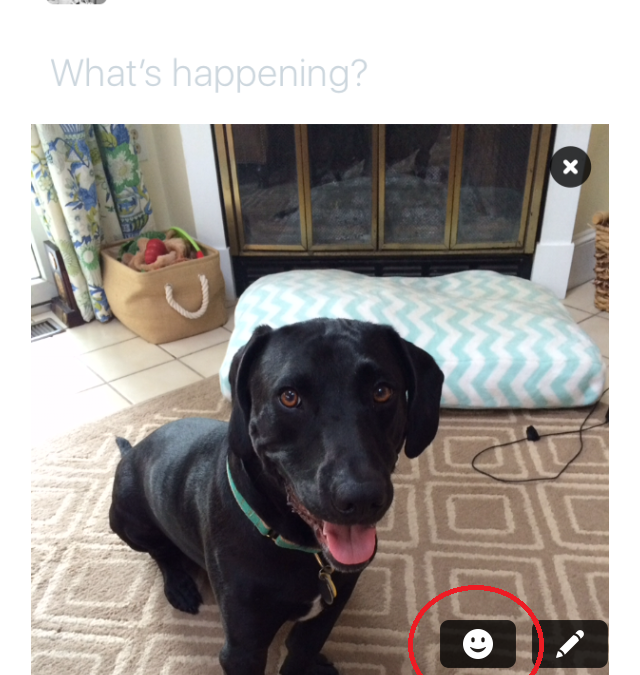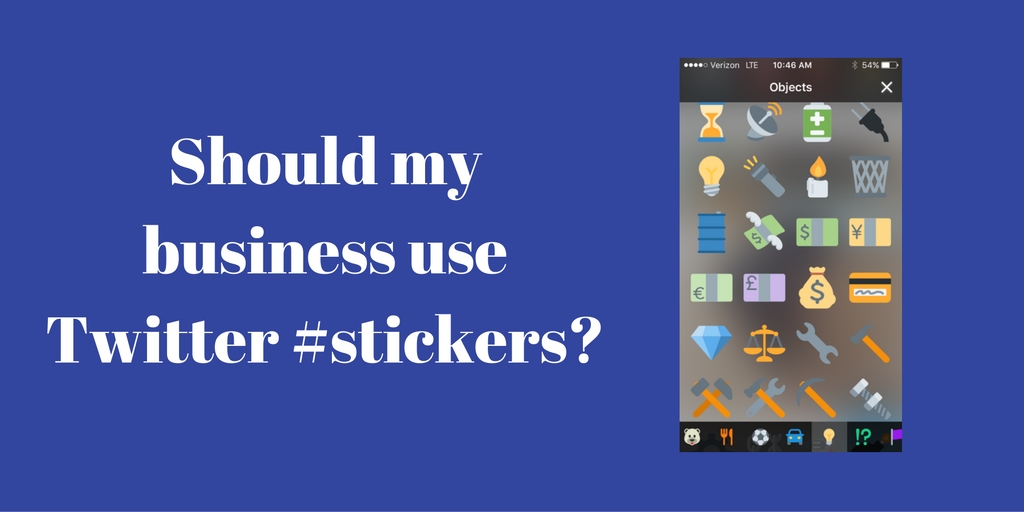
by Fronetics | Aug 10, 2016 | Blog, Content Marketing, Data/Analytics, Marketing, Strategy

Examine these stats when you analyze your content to improve your content strategy and the effectiveness of future content.
A critical (but often overlooked) element of an effective inbound marketing strategy follows the actual production and distribution of content: analyzing your content. It sounds obvious, but many businesses who are producing content do not take the time — or are unsure how — to evaluate how it has performed over time.
Regularly studying how your blog posts, videos, high-value resources (e.g., case studies), and other content resonates with your audience helps inform your strategy. It tells you what kinds of content succeeds in driving traffic and converting leads, as well as which distribution platforms and patterns are optimal.
While you may have had a good feel for this when you initially developed your strategy — p.s. you should always have a strategy and you should always document it — an audit can confirm it. If it doesn’t, you can make adjustments.
Also, keep in mind that digital and social media is constantly evolving. Regular content analysis will dictate where and how you need to accommodate changing user patterns, interests, behaviors, and technologies.
Here are four things that are important to evaluate when you analyze your content.
1) Views
How many times your content has been read, watched, or downloaded is a good indicator of how well it resonates with your audience. It’s important to evaluate individual pieces of content (rather than total website views) so you’ll know exactly what is driving web traffic.
Run such reports on a regular basis, examining how your content has performed over that short interval of time. You’ll want to consider how certain subjects play during the time of publication. You should also keep an eye out for how things have changed over time — for example, a topic that normally drives a lot of traffic that is no longer getting the same attention. Has audience interest changed or been satiated? Is the distribution platform no longer appropriate for that topic?
For blog posts or web pages, make sure to check both pageviews and unique pageviews, as well as bounce rate and time on page. That way, you can rule out any spam traffic or pages that draw a large audience but do not end up keeping them once they start reading. An eye-catching title or well-optimized post can bring the horse to water, but if it’s not drinking, your content isn’t doing its job.
2) Performance over time
It’s equally important to check how individual content has performed over its lifetime.
You may have a blog post that gets an extraordinary number of views the week it is posted but then fails to draw traffic thereafter. If that’s the case, examine what circumstances were in place at the time of the post and how the post fit in that context, then try to replicate that pattern in the future.
On the other hand, if you have a post that continues to draw traffic long after it has been posted, take note. Is content involving similar topics popular as well? Your audience is hungry for information about that subject. Consider other factors: Was it authored by a particular company leader? Is it formatted in a certain way, or did you use certain keywords?
3) Social impact
What kind of content gets the most engagement on social media? Examining the number of likes, shares, comments, and click-throughs on individual posts offers insight into what your followers are interested in. It can also help you evaluate your distribution strategy. Do certain subjects perform better at different times of the day? Get more engagement on one platform? Use individual channel’s analytics features as well as tools like Google Analytics to evaluate the impact of your content on social media.
4) Lead conversion
The reason we create and publish content is to attract new business, so knowing what drives lead generation and conversion is incredibly valuable. If you use marketing software, like HubSpot, this is easier to do. If not, it can be difficult, though not impossible, to understand what content was critical in winning over your customers.
Related posts:

by Fronetics | Aug 9, 2016 | Blog, Content Marketing, Marketing, Supply Chain

As buyers spend more time researching vendors online, your business’ digital content should anticipate the questions, problems and needs of your target buyer so that you can make their short list.
Want to appeal to — and close sales with — more customers? Your content must speak directly to your target audience’s needs and wants.
According to Demand Gen’s 2016 B2B Buyer’s Survey Report, nearly half of buyers (48%) report that their purchase cycle has increased since last year. One of the main reasons: they are spending more time conducting research and using more sources to investigate purchases.
That means potential customers are scrutinizing vendors more than ever before. As a vendor, your business should be examining your digital content to ensure it meets the expectations of B2B buyers seeking products and services like yours.
And what, exactly, are buyers looking for?
When researching a vendor on its website, Demand Gen survey respondents reported overwhelmingly that “content that speaks directly to [my] company” is the single-most influential aspect of the website. In fact, 96% rank that somewhat important or very important.
Therefore, your business should be creating content that answers questions, solves problems, and makes life easier for your target buyer. When they are reading your website, blog, or social media posts, they should feel like you understand their pain points and concerns and that you have the exact solution their specific business requires.
What else is important to buyers?
When it comes to conducting research on a vendor website, buyers ranked the following factors, in order, behind content speaking directly to their companies.
1. Easy access to pricing and competitive information
Can anyone navigating your website quickly and easily find what your products or services cost? Or have you hidden or excluded that information?
2. Vendor-focused content
Buyers want to understand not just who they are buying from but, more importantly, what you can offer them. Case studies detailing successes of your other customers, product data sheets illustrating technical characteristics and performance metrics — buyers crave this kind of information.
3. Search and navigation tools
Buyers want to be able to quickly find exactly what they are looking for. Your website should be easy to navigate and very user-friendly.
4. Easy access to content
Are you hoarding high-value resources behind lengthy registration forms in order to extract as much information as possible from your leads? You may be losing prospects because of it. Keep your forms short and sweet.
5. Relevancy of website speaking directly to the industry/company
You understand the business environment in which your customers operate. Your website should convey this knowledge so that prospects can recognize your expertise and trust your business and its solutions.
6. Thought leadership content
Expert content like whitepapers, reports, and infographics elevate your brand image and establish you as a leading voice in the industry.
Related posts:

by Fronetics | Aug 8, 2016 | Blog, Content Marketing, Marketing, Strategy

B2B marketers who meet more often to discuss and evaluate their content marketing strategy report success at much higher rates than those that meet less frequently.
Do you feel your content marketing is producing results? Only 30% of B2B marketers say they feel effective, and a shocking 55% admit they do not actually know what content marketing success looks like.
If this sounds familiar, take a note from the most effective B2B marketers: Meeting more often can improve content marketing performance.
Another meeting? Say yes for success
We all have been guilty of thinking, “Great. Another meeting to squeeze into my schedule.” But the B2B Content Marketing 2016: Benchmarks, Budgets, and Trends – North America found some interesting correlations between content marketing effectiveness and frequency of meeting. For instance:
Meeting daily or even weekly improves content marketing results.
61% of the most effective B2B marketers meet daily or weekly with their content marketing team, either virtually or in person.
Meeting more often is time well spent.
Teams that meet daily or weekly find the meetings to be more valuable (70% of respondents) than those who meet less often — like biweekly or monthly (49%). But, only 36% of the content marketing professionals surveyed met once per week, and only 8% met daily. And you guessed it: Those were the teams that reported having the most success with their content marketing.
Meeting strategies
There is more to success than simply holding a meeting, of course. Time spent around the conference table is not going to bring results unless you are asking the right questions with keeping eyes on your content strategy.
What are the new challenges the team is facing? What is happening in the news or industry that might affect or interest your audience? How is your audience responding to recent content? There must be more to regular meetings than coffee and bagels.
Equally important is ensuring the team has a clear vision of your goals and benchmarks. The greater the team’s understanding of what success looks like — clearly defined objectives, expectations, and your content marketing goals — the more effective they can be at their job.
Things to discuss about your content strategy:
- Purpose: What is the goal or objective the team is striving for from content marketing efforts? More leads and increased brand recognition are common examples.
- Audience: Who is your target audience, and what are their needs, interests, and concerns? Where do they consume content (e.g., LinkedIn, blogs)? When do they visit those channels?
- Tactics: What platforms are you using for distribution, and how do they work together? Is there an email campaign as well as daily Facebook, Twitter and Instagram posts, for example? Are images important for results?
General discussions to include:
- Open-topic communication: Tap into knowledge from all members of the team to generate ideas, information, and data for content creation. Open discussion can bring insight and fresh angles of approach.
- Ways to improve and reach objectives: Fresh ideas are as important to the team as fresh content. What could you be doing better? Should you be measuring something that you’re not? Are there new technologies or tools that you should try? Every team member should have a voice in how to best execute or improve your content strategy.
Related posts:

by Fronetics | Aug 4, 2016 | Blog, Content Marketing, Marketing, Social Media

Add stickers to your photos on Twitter to join in on real-time conversations about trending topics and to grow your audience.
Twitter announced at the end of June that it would be rolling out a new feature called #stickers. Twitter stickers are a visual twist on a hashtag, meaning you can add them to the photos you tweet and be connected to the community using the same sticker. Users can click a sticker to see other tweets tagged with the same image.
You can use multiple stickers (up to 25), place them anywhere on your photo, and resize and rotate them. There are hundreds to choose from, organized by categories, including:
- Accessories (e.g., hats, sunglasses)
- Smilies and people
- Animals and nature
- Food and drink
- Activity (e.g., sports equipment, instruments)
- Travel and places
- Objects
- Symbols
- Flags
Why would my business use Twitter stickers?
Twitter suggests, “Use [stickers] to share what you’re doing or how you’re feeling, to show support for a cause, or to just add some flair.” While their primary intention may be fun, Twitter stickers should pique businesses’ interest because they are searchable. And anytime something is searchable, that means it is another opportunity for potential customers to find you.
By using a sticker on one of your tweets, you increase your audience for that tweet in the same way that you do when using a hashtag. People who search by the stickers you use will see your tweets.
Imagine the potential! Medals or sports icons during the Olympics, weather stickers during extreme elements: millions of people will be using and searching these images. Find clever ways to relate Twitter stickers to your photo content, and you’ll strike a chord with an enormous audience.
Also, don’t discount the value of showing some of your brand personality through social media. Having fun with Twitter stickers can give your followers an idea of what your company is all about, show the human face behind the company name, and help them connect with you.
How do I add a sticker?
Stickers are now available to all iOS and Android users. Here’s how to add a sticker to your photo:
1) Tap the Tweet compose icon.
2) Tap the camera icon to take a photo or to select one from your camera roll.
3) Tap the sticker icon (a smiley face) on the bottom right-hand corner of the selected photo to launch a library of stickers. Say I wanted to tweet this photo of my dog:

4) Tap your selected sticker(s). Once placed on your photo, hold and drag the sticker with your finger to move to your desired position.

5) To tilt, enlarge, or shrink a sticker: Place two fingers on either side of the sticker and turn the sticker clockwise or counterclockwise to rotate, or slide your fingers apart or together to resize.
6) If you’d like to remove a sticker from a photo, press and hold on the sticker, then drag it to the bottom of your screen until the trash can icon appears.
Here is what the finished product looks like:

Related posts:

by Fronetics | Aug 3, 2016 | Blog, Content Marketing, Marketing

Here are some guidelines on what content marketing might cost your business and why you need each element to be successful.
Content marketing can be a game-changing strategy for companies looking to increase brand awareness, improve lead-generation efforts, and grow their business. But sticker shock can prevent some from pulling the trigger — especially when an organization is unsure how to measure ROI.
Content marketing will require an investment in services that are not cheap (writing, design, social media management, etc.) or a major time commitment from your own human resources. That being said, the more dollars or resources you throw at it will not necessarily ensure greater success.
To find the right pricing for your content marketing, it’s important to understand what you are paying for. Here are some guidelines for how much content marketing should cost (if you’re doing it right).
A pricing breakdown
The right content, published at the right time, reaches buyers who are looking for products or services like yours and informs them about your business. That, in turn, entices them to become customers.
Here’s the rub: You cannot just throw any old content out there and expect it to work. Here is what you need:
1) A data-driven inbound marketing strategy
This initially may cost around $20k. That sounds like a lot, but here’s why it is so important.
Research proves that content marketing is drastically more effective when it is 1) backed by a strategy, 2) the strategy is documented, and 3) a designated person is leading the strategy. Whether created by an in-house team or an outsource partner, your strategy should be driven by data, and should include these vital components:
- Buyer personas and journey: Who your potential customer is and what steps they take to research, evaluate, and decide to buy
- Content mapping and demand generation: What topics appeal to your customers? How and when should you deliver content? What channels reach customers best?
- Conversion and scoring leads: How to optimize lead-conversion rates and evaluate leads throughout the buyer journey; identifying optimal timing for sales calls
- Goals and KPIs: Define what success looks like and how to measure progress
2) Content marketing talent
Human resources may cost $5K-$10K per month. You need a team of skilled writers, graphic designers, and social media managers who can produce quality content, on a regular basis, and distribute it effectively.
Why can’t you just have the intern do it and save some cash, you ask? When it comes to content, you get what you pay for. Consider that 27 million pieces of content are shared every day. That means consumers can afford to be picky about the media they consume. If they find your content lacking in quality, substance, or appearance, they simply won’t read it. You might as well not have written it.
For your content to be effective — meaning your content attracts your target audience and drives profitable customer action — it must stand out, really stand out, among the masses. For that, you need a professional hand.
3) Lead management, marketing software and analytics
This may cost about $10k per month. It includes marketing automation software, like HubSpot, as well as a skilled manager(s) to provide insight and reports on content performance. This way your organization can effectively track leads, evaluate what is working, and adjust your strategy as necessary to ensure optimal performance.
Return on investment
If you’re still uncomfortable with these numbers, keep these in mind: Content marketing costs 62% less than traditional marketing and generates about 3 times as many leads.
Content marketing is valuable in growing any business. But remember that getting your return really does require making that investment.
Related posts:


by Fronetics | Aug 2, 2016 | Blog, Content Marketing, Marketing, Strategy

Content marketing can help with lead generation and nurturing, but your business still needs a solid sales staff to close deals.
Content marketing helps generate a steady influx of quality leads and provides relevant information to prospects as they move down the sales funnel. Content can even help close a deal.
But forget any notion about content marketing replacing the work of your sales staff. The two must work together to convert leads into customers.
Even quality leads do not typically turn into sales on their own. You need a sales staff to take those opportunities and cultivate them into new business.
What content marketing does vs. your sales staff
Content marketing and sales staff provide different touch points for leads at distinct stages of the buying cycle. Here are a few examples:
Forming a relationship
- Content marketing opens up dialogue with potential customers. Often the first signs of customers’ interest appear after they read one of your blog posts, when they open and click through an email, or they share your company’s posts on social media channels.
- Your sales staff keeps that positive contact going to the next level. They develop it into a conversation. That person who read your blog post now has a relationship with a person in your company.
Providing information
- Content marketing can reach a potential customer early, while they are looking for solutions. B2B buyers report spending more time conducting research, using more expert content such as vendor websites, user reviews, and social media, before making a purchase. Your business should be producing content in order to make the short list of buyers who are looking for products and services like yours.
- Your sales staff answers those important first questions. When a customer reaches out with a query, s/he is likely 60% through the sales process. The customer has done a fair amount of research, and the sales rep must speak specifically to the customer’s needs — in a way that generic content can’t — to keep them interested and moving down the funnel.
Advocating for your brand
- Content marketing increases brand awareness for your business. It helps elevate your brand position within the industry and keeps your business top of mind, even when potential customers aren’t ready to make a purchase.
- Your sales staff is the advocate for your brand when a customer is preparing to make a purchase. They should be proactive in pursuing business when customers show interest in your content or when they reach out with questions. They drive dialogue and get to know customers and how your business can help them.
The content marketing, sales staff partnership
Curating and creating great content will generate quality leads for your company. But, your sales staff is vital to building relationships with potential customers and closing the sale.
Related posts:











